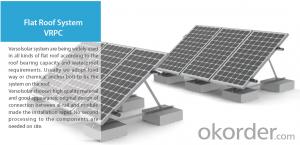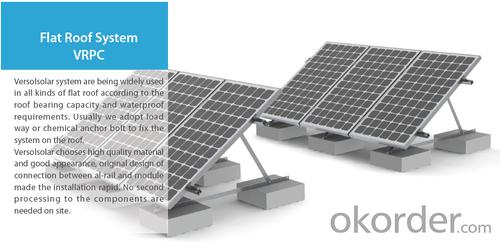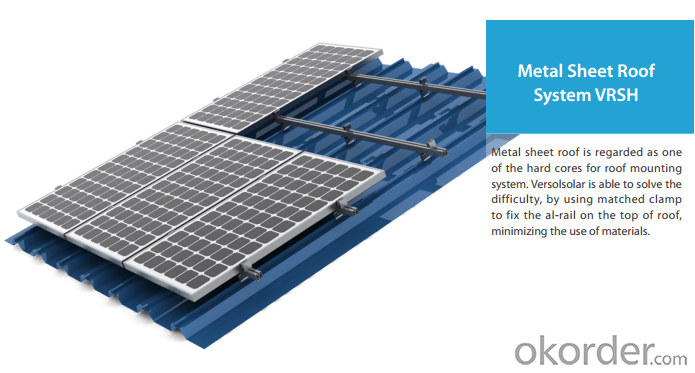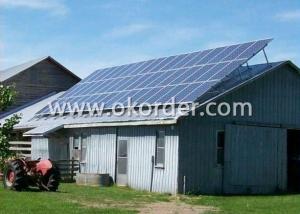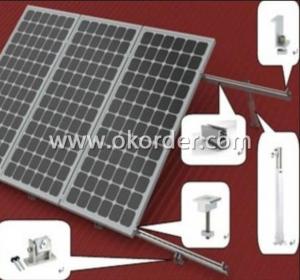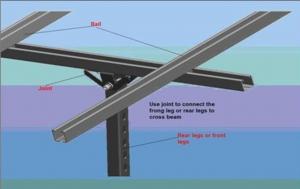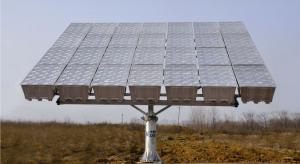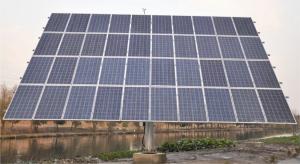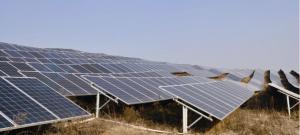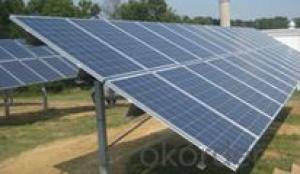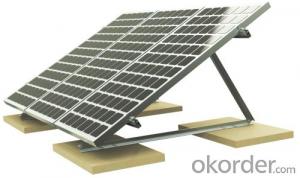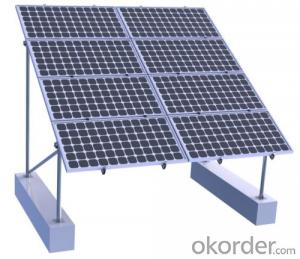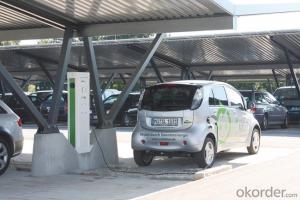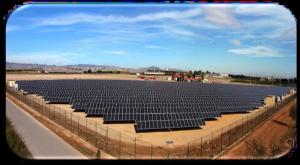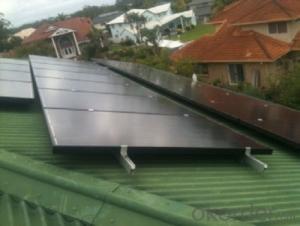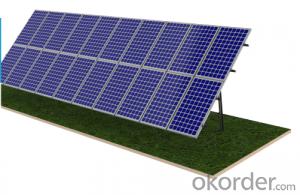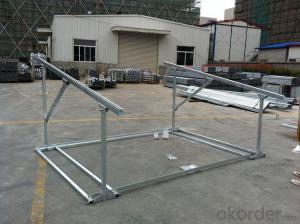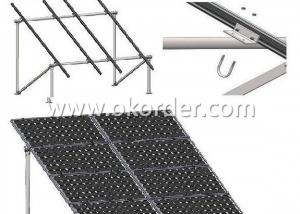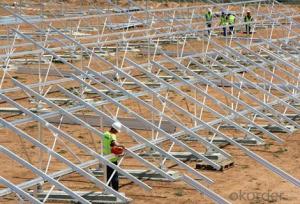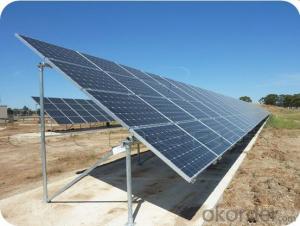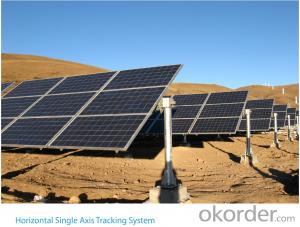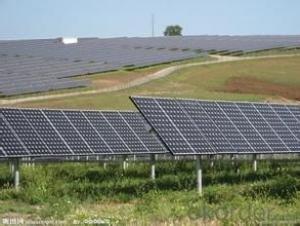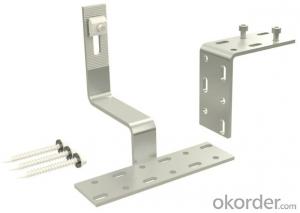PV Solar Mounting Systems for Roof Mount PV Racks
- Loading Port:
- China Main Port
- Payment Terms:
- TT OR LC
- Min Order Qty:
- -
- Supply Capability:
- -
OKorder Service Pledge
Quality Product, Order Online Tracking, Timely Delivery
OKorder Financial Service
Credit Rating, Credit Services, Credit Purchasing
You Might Also Like
Product Features
· Widely used for both crystalline and thin film modules.
· Easy & quick installation.
· Only 4~5 kinds of components and no more than three kinds of tools in whole system fixation.
· All system components are made with high quality aluminum & stainless steel.
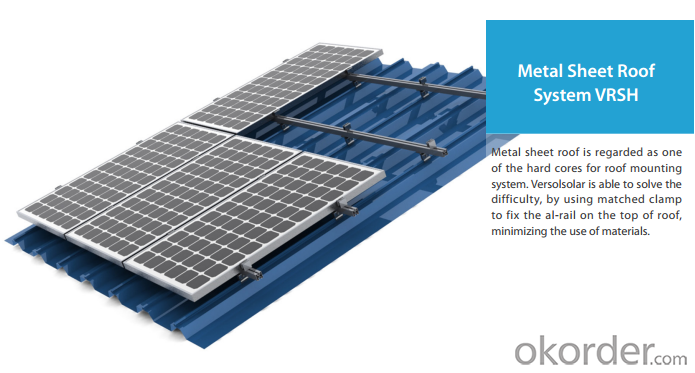
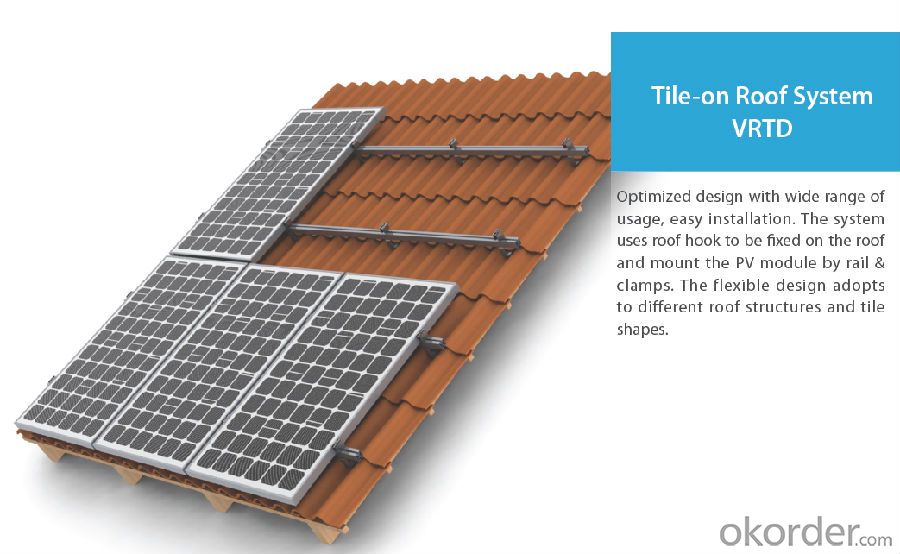
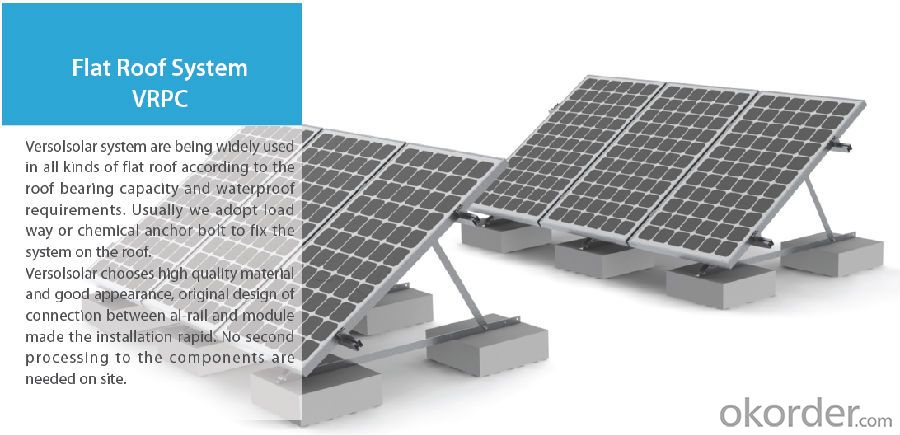
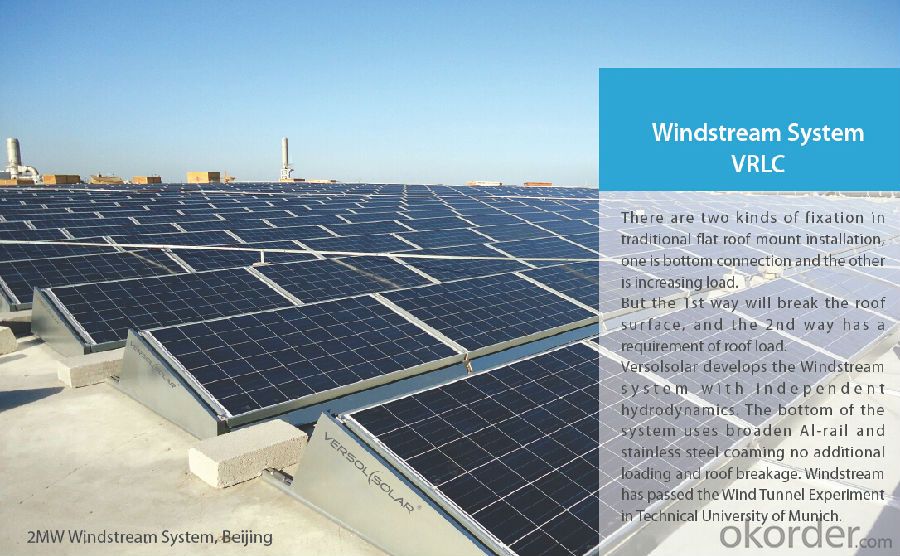
- Q: Are there any specific requirements for installing a solar mounting system on a rooftop with satellite dishes?
- Yes, there are specific requirements for installing a solar mounting system on a rooftop with satellite dishes. It is important to ensure that the solar panels do not obstruct the line-of-sight between the satellite dishes and the satellites they are communicating with. This means that careful consideration needs to be given to the positioning and placement of the solar panels, ensuring that they do not cast shadows on the satellite dishes. Additionally, the structural integrity of the rooftop and the ability of the mounting system to support the weight of both the solar panels and the satellite dishes need to be assessed and addressed.
- Q: Can solar mounting systems be installed on asphalt roofs?
- Yes, solar mounting systems can be installed on asphalt roofs. In fact, asphalt roofs are one of the most common types of roofs for solar installations. The mounting systems are designed to be compatible with various roof types, including asphalt, and can be securely attached without causing damage to the roof.
- Q: Can a solar mounting system be installed on a boat or RV?
- Yes, a solar mounting system can be installed on a boat or RV. These systems are designed to be versatile and can be mounted on various surfaces, including the roof or deck of a boat, or the roof of an RV. They provide a convenient and efficient way to harness solar energy while on the move, allowing for off-grid power generation and reducing reliance on traditional energy sources.
- Q: Are there any specific requirements for installing a solar mounting system on a rooftop with chimneys or vents?
- Yes, there are specific requirements for installing a solar mounting system on a rooftop with chimneys or vents. It is important to ensure that the mounting system is designed in a way that avoids obstructing or interfering with the chimneys or vents. The system should be installed in a manner that allows for proper ventilation and maintenance of the chimneys or vents. Additionally, it is crucial to evaluate the structural integrity of the rooftop and ensure that the mounting system is securely attached to withstand any potential wind or seismic loads.
- Q: Can a solar mounting system be used in areas with corrosive environments?
- Yes, a solar mounting system can be used in areas with corrosive environments. However, it is crucial to select a mounting system that is specifically designed to withstand and resist corrosion. This can be achieved by using materials such as stainless steel, aluminum, or galvanized steel, which have high resistance to corrosion. Additionally, proper maintenance and regular inspections are necessary to ensure the system remains in good condition and protected against any corrosive elements in the environment.
- Q: What is the expected reduction in carbon emissions with a solar mounting system installation?
- The expected reduction in carbon emissions with a solar mounting system installation can vary depending on various factors such as the size of the system, location, and energy consumption patterns. However, on average, a solar mounting system installation can result in a significant reduction in carbon emissions by offsetting the need for conventional electricity generation from fossil fuels. Studies have shown that a typical residential solar system can reduce carbon emissions by an estimated 3 to 4 metric tons annually, while larger commercial or utility-scale installations can achieve much higher reductions.
- Q: Can a solar mounting system be used in areas with solar incentives for low-income households?
- Yes, a solar mounting system can be used in areas with solar incentives for low-income households. These systems can help low-income households access renewable energy and benefit from the incentives provided by the government or other organizations. By installing solar panels on their roofs or using ground-mounted systems, low-income households can reduce their electricity bills and contribute to a cleaner environment. The availability of solar incentives can further make the installation of solar mounting systems more affordable and accessible for these households.
- Q: Can a solar mounting system be used with solar-powered security systems?
- Yes, a solar mounting system can definitely be used with solar-powered security systems. The solar mounting system provides a secure and efficient way to install solar panels, which generate the power needed for the solar-powered security systems to operate effectively. By using a solar mounting system, the solar panels can be positioned optimally to capture sunlight and convert it into energy, ensuring a reliable power source for the security systems.
- Q: Can a solar mounting system be used in hurricane-prone areas?
- Yes, a solar mounting system can be used in hurricane-prone areas, but it must be designed and engineered to withstand high winds and extreme weather conditions. Specialized mounting systems are available that are tested and certified to meet specific wind load requirements, ensuring the safety and durability of the solar panels during hurricanes.
- Q: Are there specific requirements for installing a solar mounting system on a pitched roof?
- Yes, there are specific requirements for installing a solar mounting system on a pitched roof. These requirements include ensuring that the roof structure can support the additional weight of the solar panels, proper alignment and orientation of the panels for maximum sunlight exposure, and using appropriate mounting hardware to securely attach the panels to the roof. Additionally, it is important to comply with local building codes and regulations, obtain any necessary permits, and work with a qualified professional to ensure a safe and efficient installation.
Send your message to us
PV Solar Mounting Systems for Roof Mount PV Racks
- Loading Port:
- China Main Port
- Payment Terms:
- TT OR LC
- Min Order Qty:
- -
- Supply Capability:
- -
OKorder Service Pledge
Quality Product, Order Online Tracking, Timely Delivery
OKorder Financial Service
Credit Rating, Credit Services, Credit Purchasing
Similar products
Hot products
Hot Searches
Related keywords
